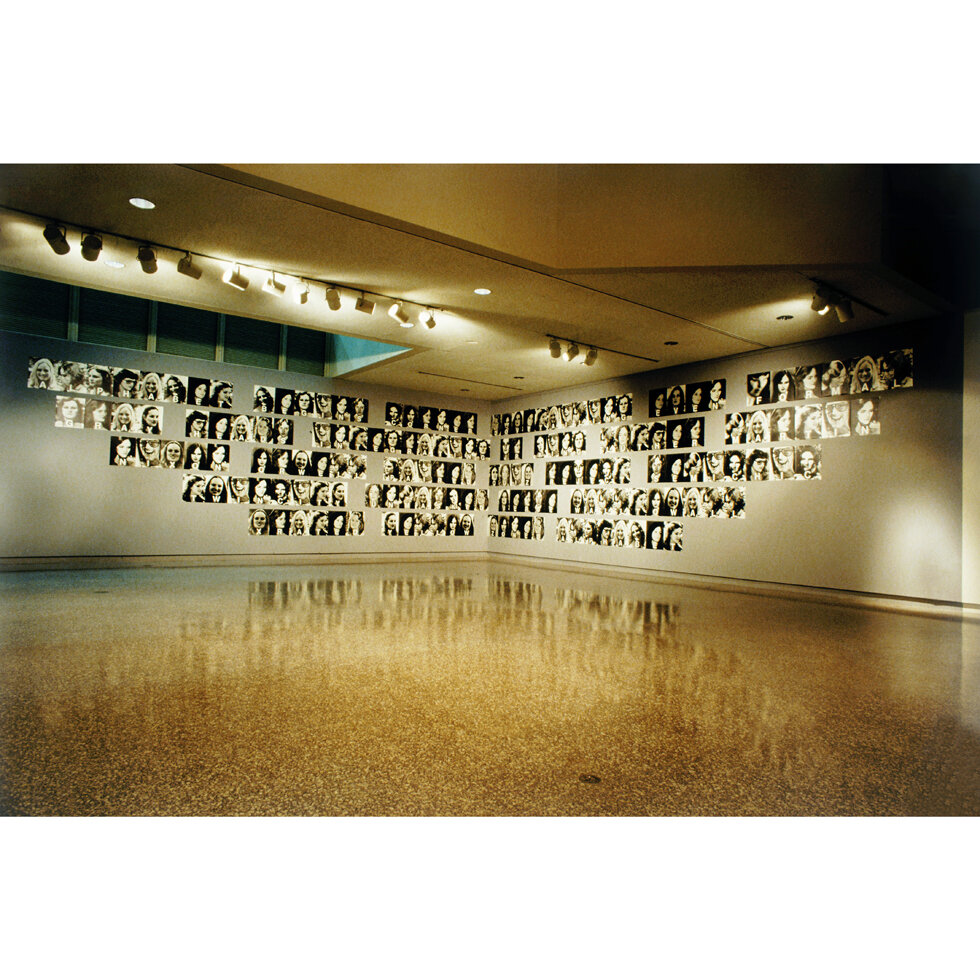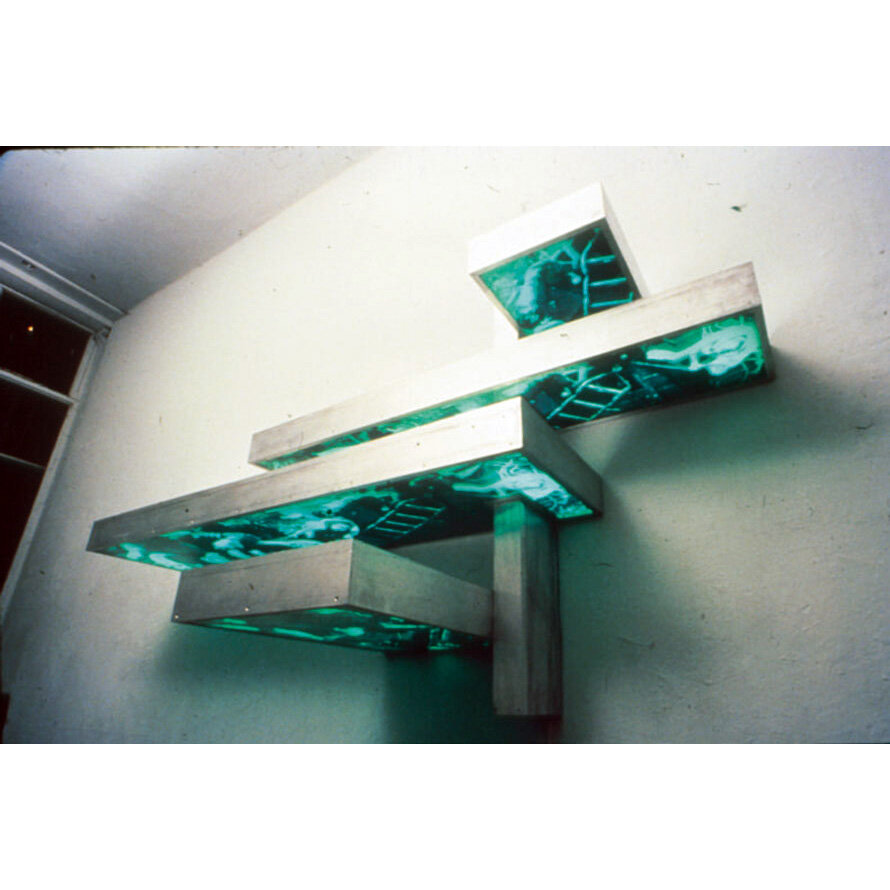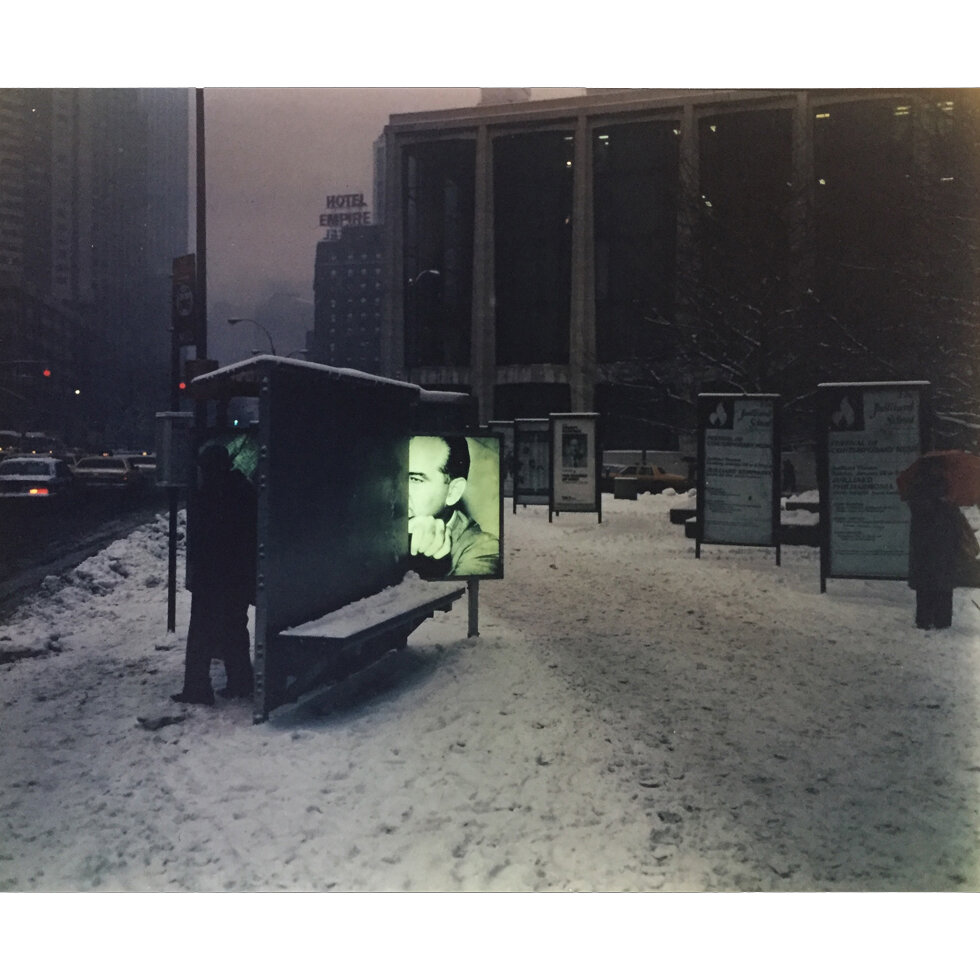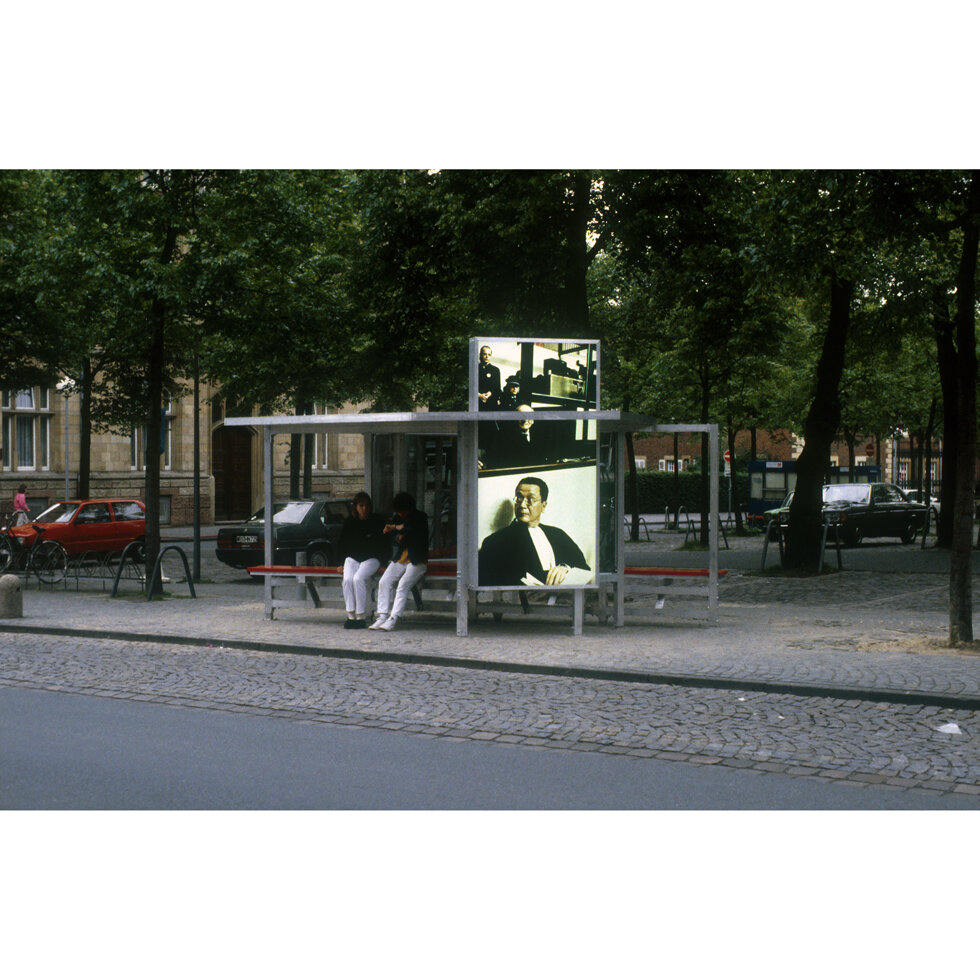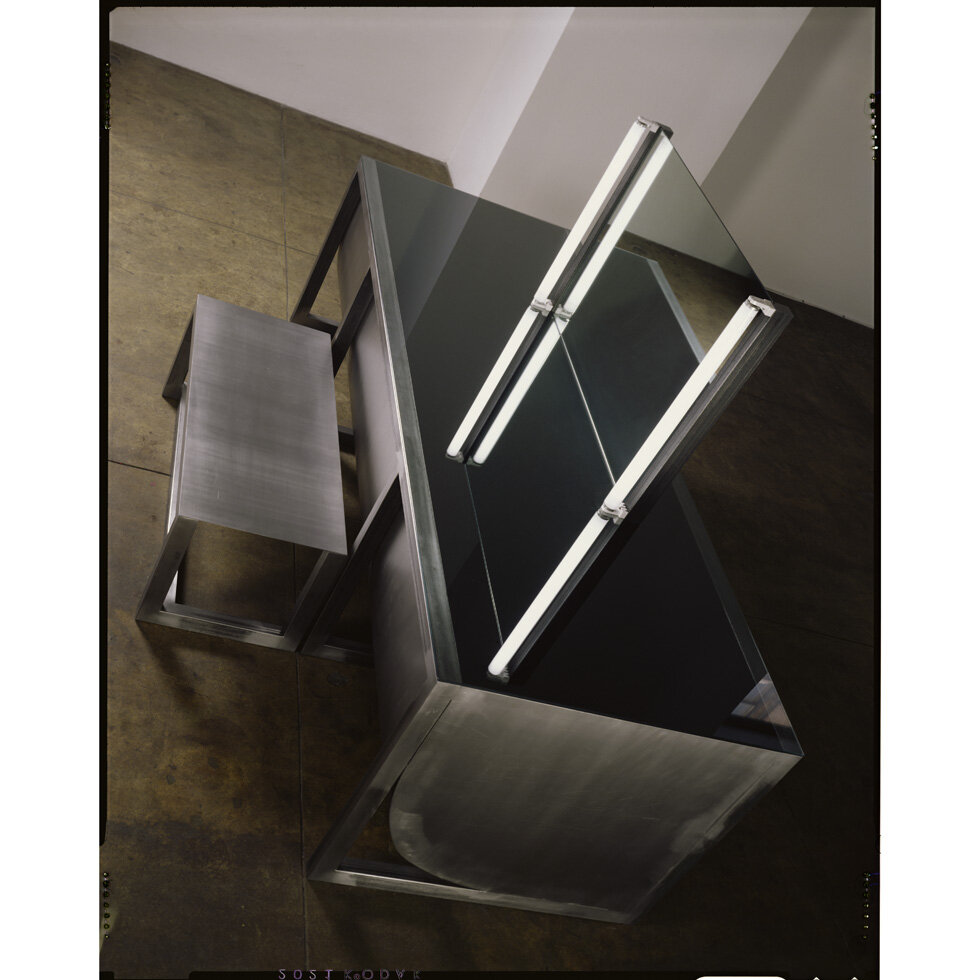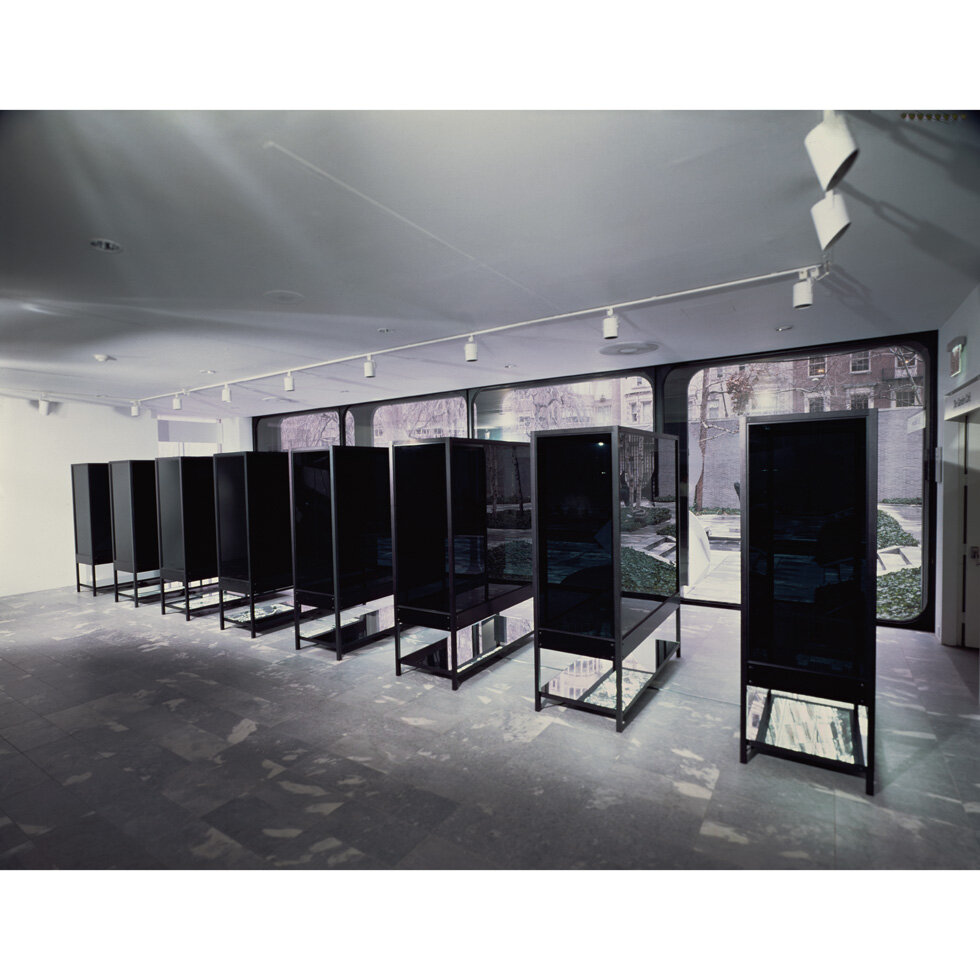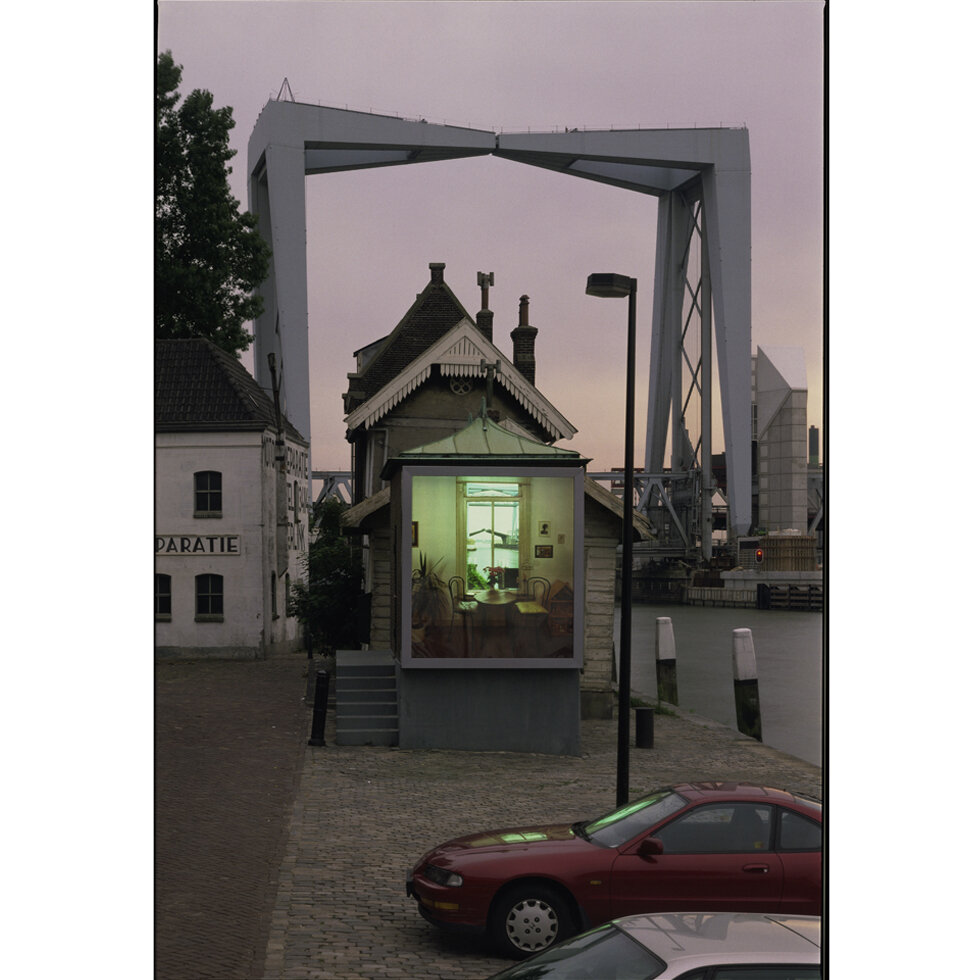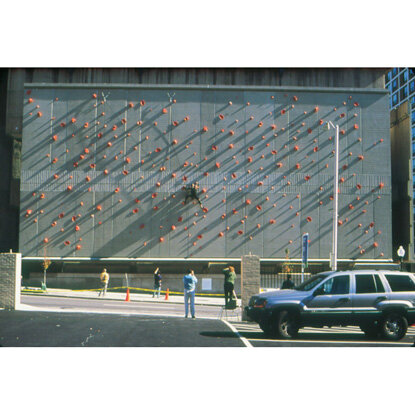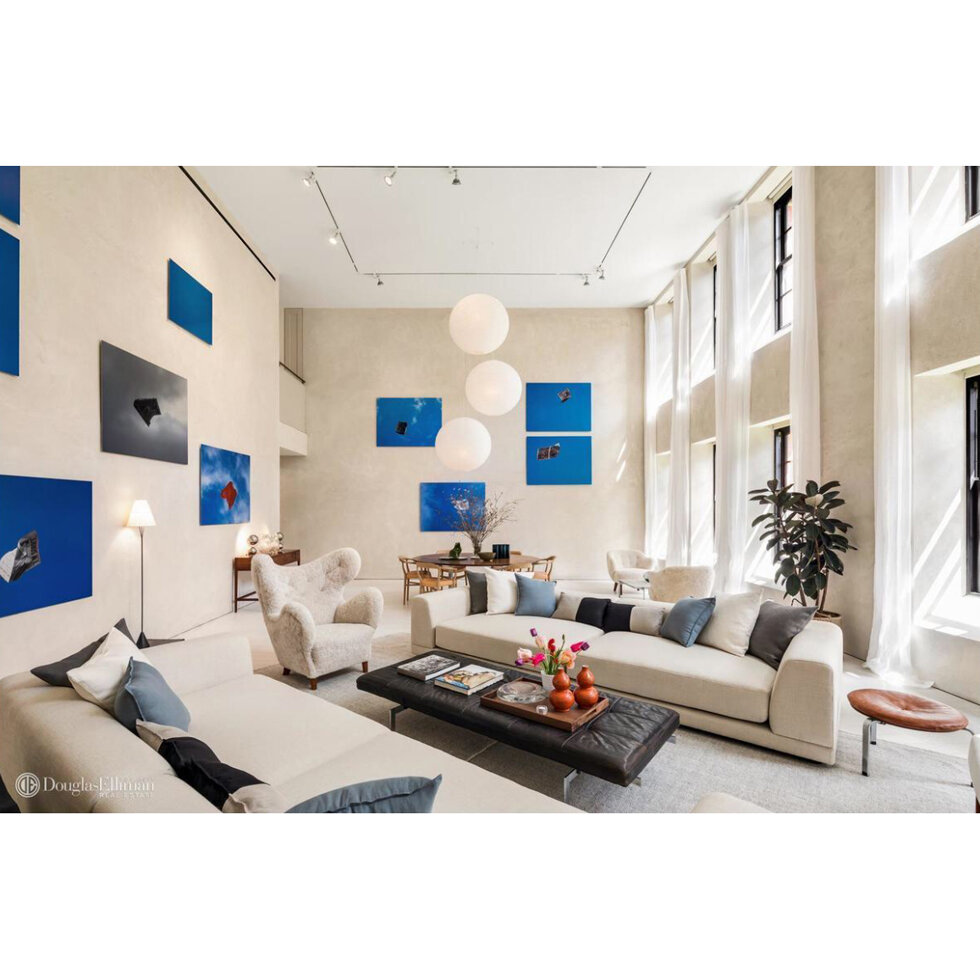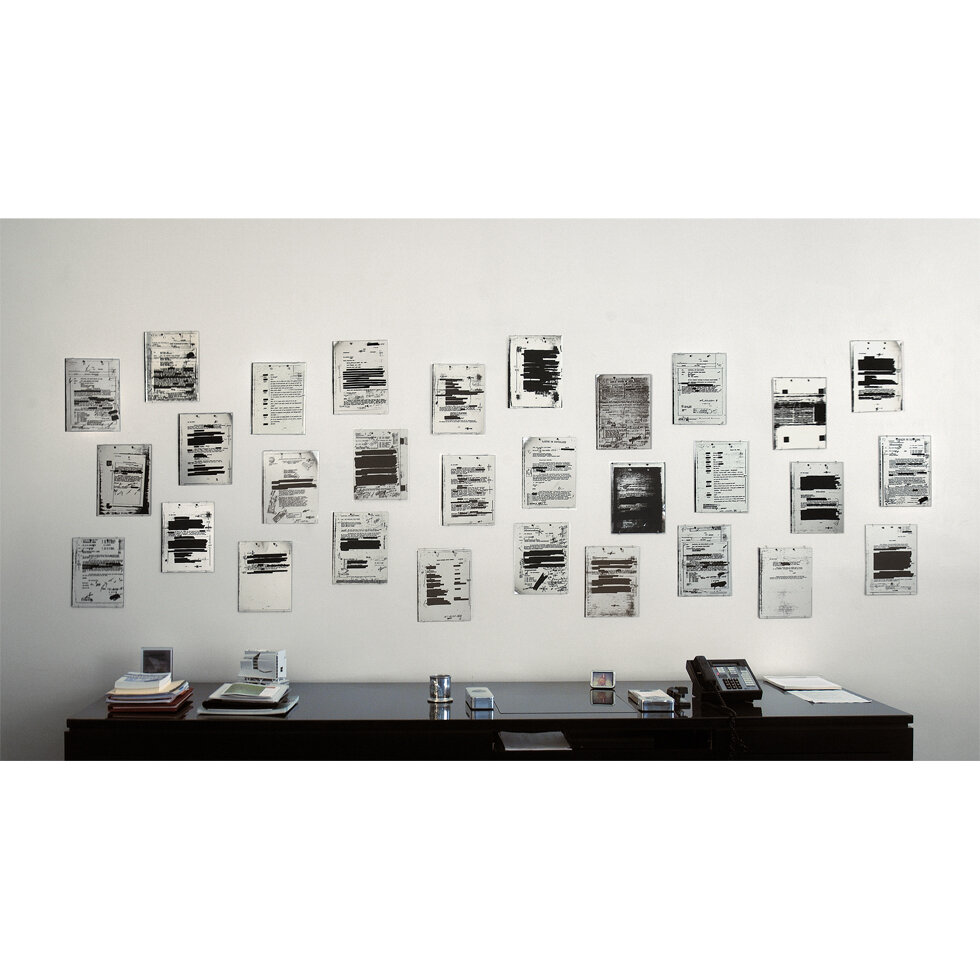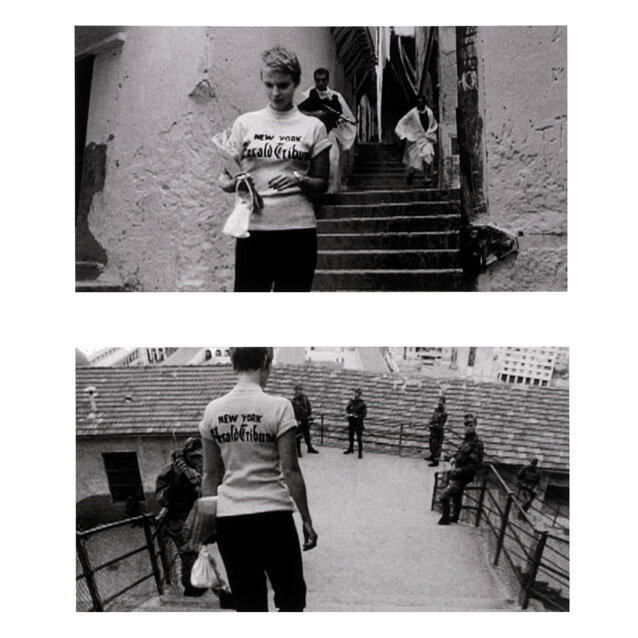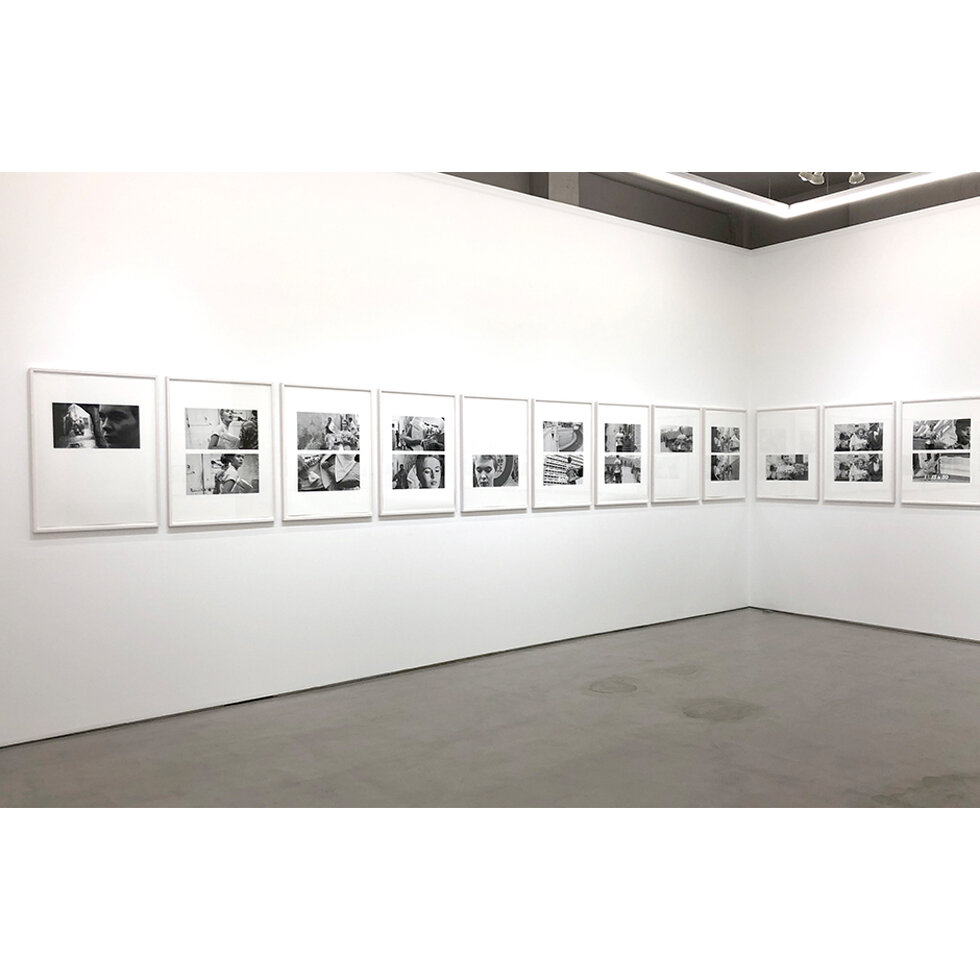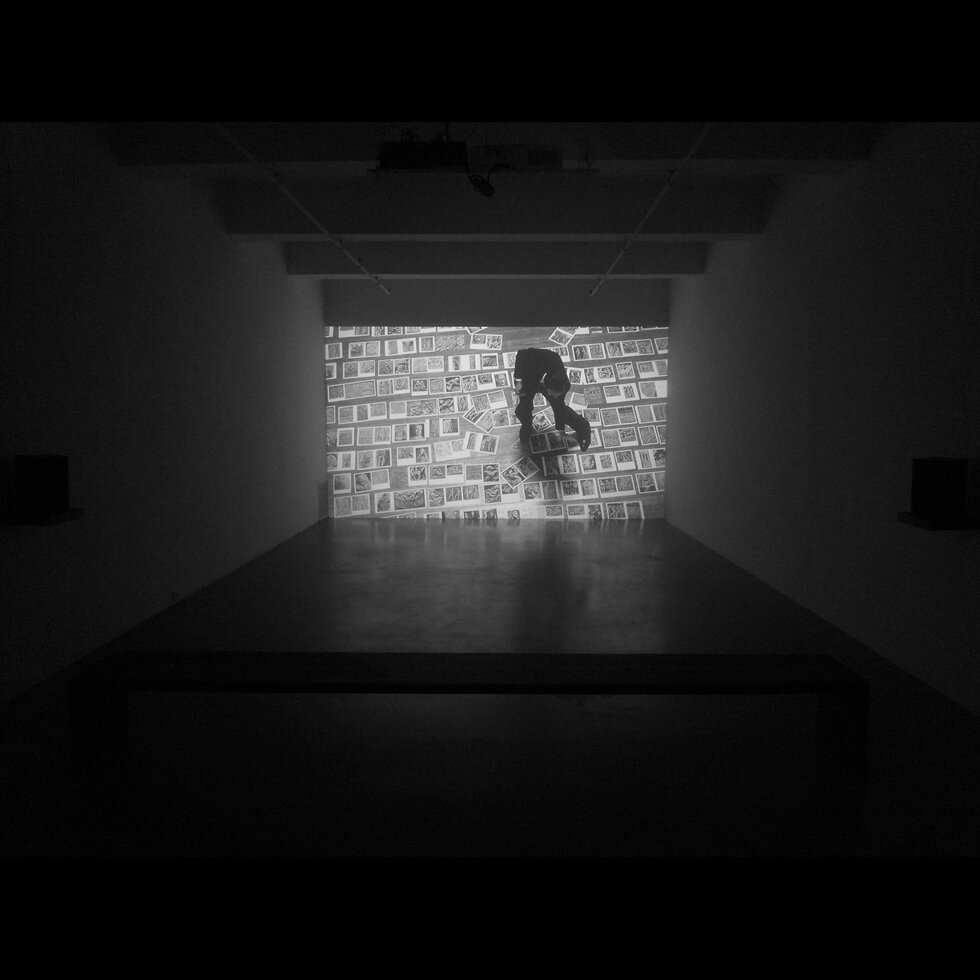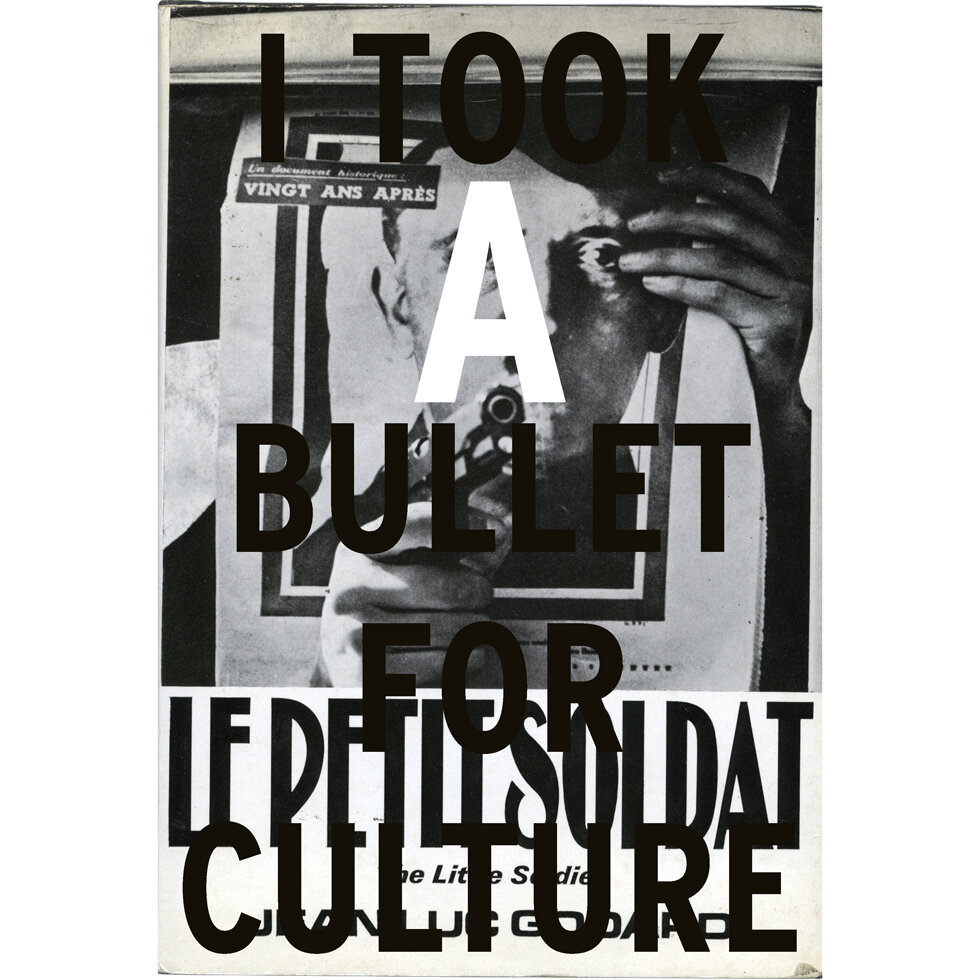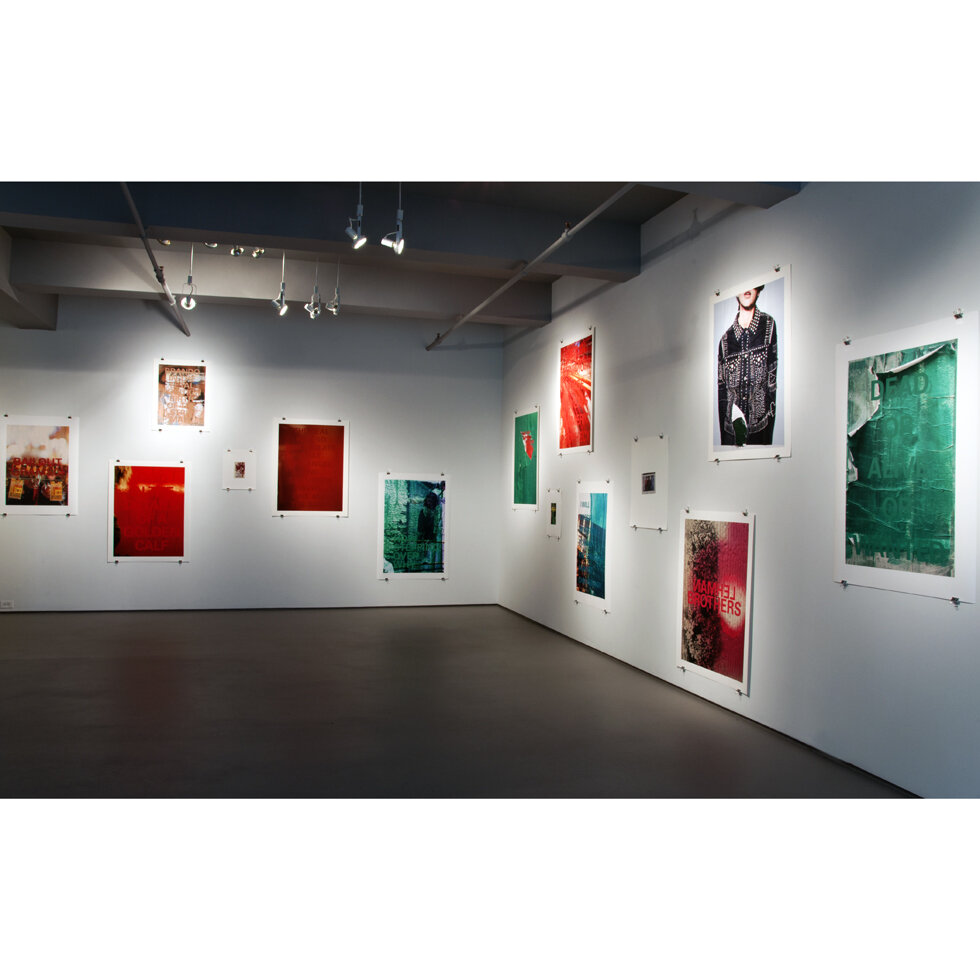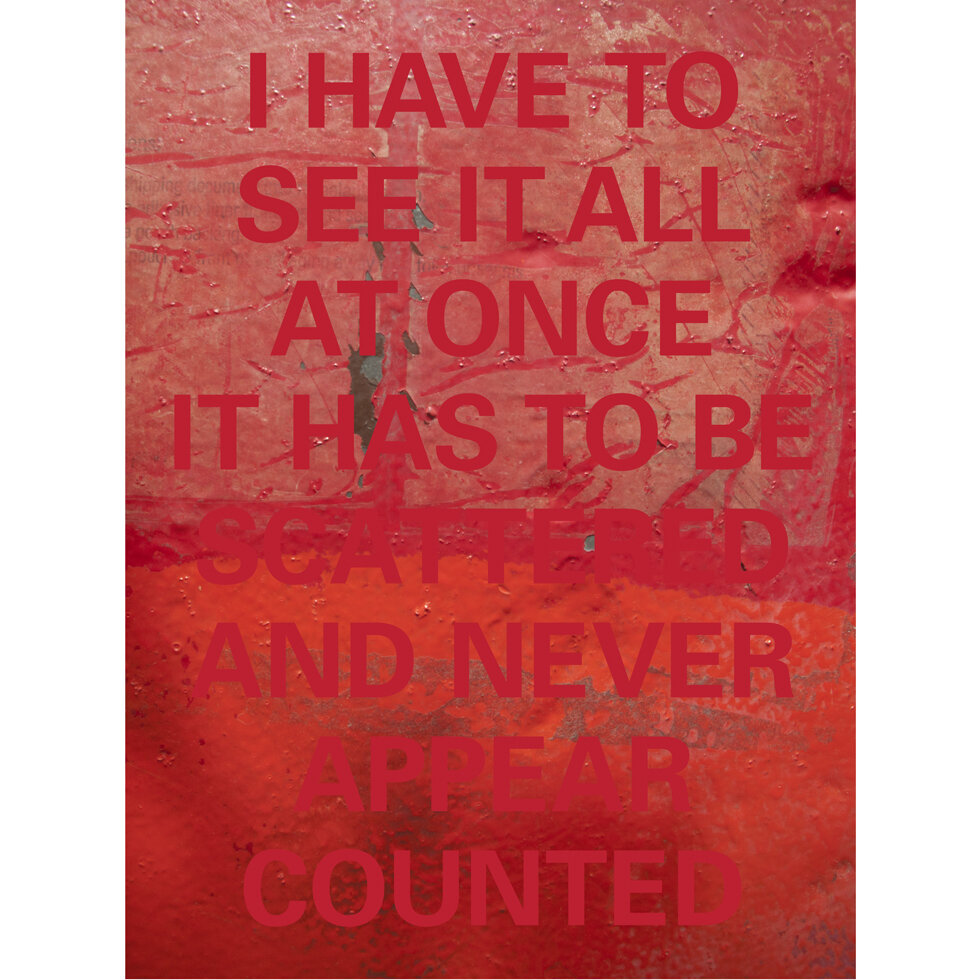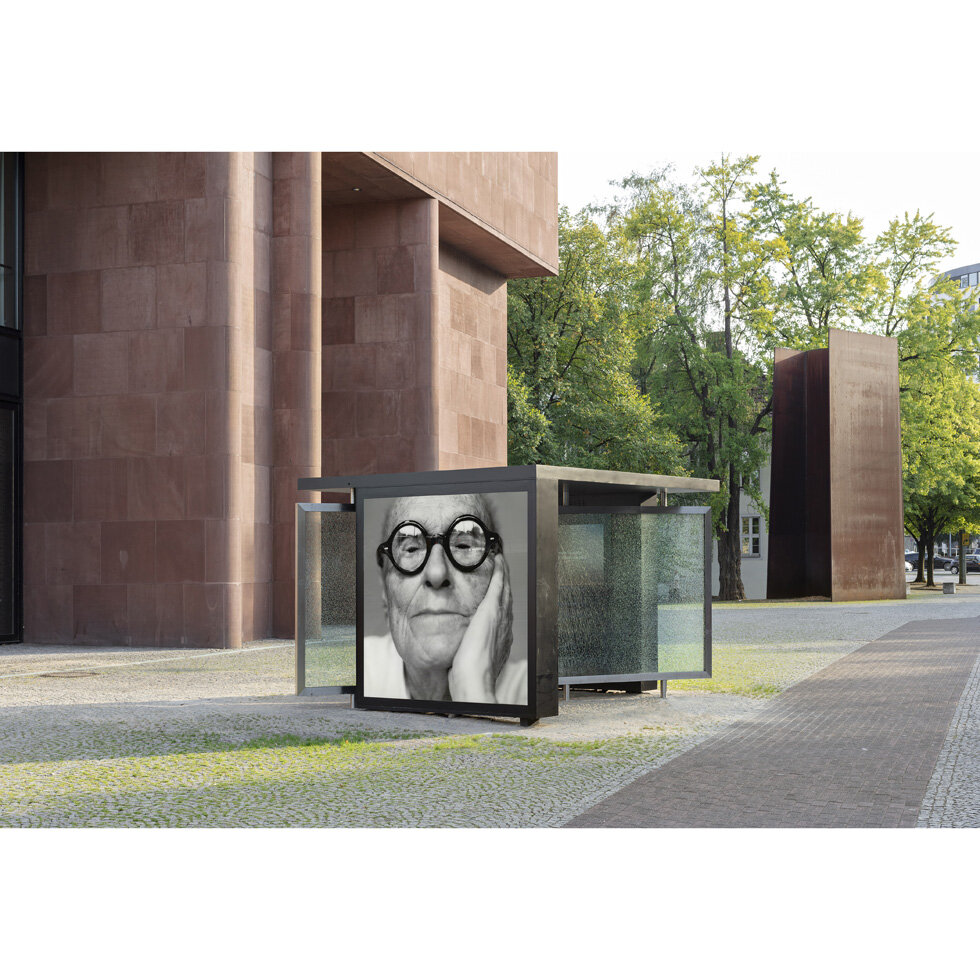Dennis Adams
From the metamorphosis of Patricia Hearst to the trial of Klaus Barbie, from the distortions of Joseph McCarthy to the execution of the Rosenbergs, Dennis Adams has singled out controversial figures and events from our not-too-distant past that, if buried underneath layers of silence, still carry an explosive charge. Over the past three decades, Adams has produced site-specific works, often in highly visible locations, such as bus shelters and city streets, that focus on the phenomenon of collective amnesia in the late twentieth century. A survey of ten years of site-specific interventions was published in a monograph entitled Dennis Adams: The Architecture of Amnesia (1989) written by Mary Anne Staniszewski. The publication was followed by two mid-career surveys organized by the Museum van Hedendaagse Kunst Antwerpen and the Contemporary Art Museum of Houston.
In 1998 Adams began to explore the possibilities of video with a project titled OUTTAKE, shown in Bremen, Berlin, and New York. Adams took a 17:23-second segment (416 film stills) from the never telecast German documentary, Bambule (1970), about delinquent girls in state orphanages, which was directed by Ulrike Meinhof. Adams re-recorded the images with a small camcorder attached to his arm as he distributed the stills to passersby in the Kurfurstendamm, Berlin, as if they were flyers associated with political propaganda or advertising.
Soon after September 11 Adams created a poetic series of fourteen Ektachrome photographs that portray the detritus-filled sky over lower Manhattan near his Tribeca studio. The series, titled AIRBORNE, was first shown in New York in 2002 and was subsequently featured in the Le Mois de la Photo in Montreal in 2003 and PhotoEspaña in Madrid in 2004.
In a recent project, MAKE DOWN (2005), Adams addresses the complexity of layers of representation contained in one cinematic fragment from Gillo Pontecorvo's The Battle of Algiers, particularly in the context of the ongoing transformations of the historical conflict between Islamic and Western cultures. Instead of presuming to unravel these meanings, Adams chooses instead to locate himself between the frames of the image in a re-enactment of the process of disguise.
Adams has been a faculty member or visiting professor at numerous institutions including Parsons School of Design, New York; Ecole Nationale Superieure des Beaux-Arts, Paris; Rijksakademie van Beeldende Kunsten, Amsterdam; and the Akademie der Bildenden Kunst, Munich. From 1997 to 2004, he was the Director of the Visual Arts Program in the School of Architecture at MIT in Cambridge, MA. He currently lectures at the Cooper Union , New York.

